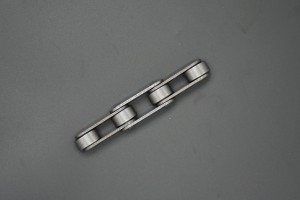Roller chains are an integral part of a wide variety of machinery, providing reliable power transmission and rotational motion for countless devices. However, over time these chains may experience wear, reducing their efficiency and potentially causing failure. Therefore, it is critical to know how to recognize the signs that your roller chain needs to be replaced. In this blog post, we will explore the basic parameters to determine when your roller chain needs to be replaced to ensure smooth operation and longevity of your machine.
1. Visual inspection:
One of the easiest ways to determine if a roller chain needs replacing is by visual inspection. Should pay attention to the following aspects:
a) Worn Pins and Bushings: Check the pins and bushings; if their ends appear flat or you observe signs of excessive wear, your roller chain may need replacing.
b) Elongation: Roller chains gradually elongate during use, causing chain slack. Measure the distance between multiple links to check for elongation. If the limit specified by the chain manufacturer is exceeded, it needs to be replaced.
c) Damaged plates and rolls: Inspect the outer plates and rolls for cracks, chips or any other visible damage. Any sign of such damage requires replacement of the roller chain with a new one.
2. Auditory cues:
In addition to visual inspection, listening to the sound the chain makes during operation can also help in diagnosing potential problems. Heed the following auditory cues:
a) Unusual Noise: Excessive noise, squeaking or rattling during roller chain motion is usually a sign of wear. Sound is best heard in a quiet environment without much background mechanical noise.
3. Chain flexibility:
Roller chains must maintain a certain degree of flexibility in order to run smoothly. Please note the following points:
a) Lateral movement: Move the chain sideways at various points. If the chain shows noticeable sideways movement or feels loose, it may be an indication that it’s time to replace it.
b) Restricted movement: On the other hand, a stiff or stiff chain can mean binding due to wear or insufficient lubrication.
4. Lubrication:
Lubrication plays a vital role in the proper operation and service life of roller chains. Insufficient or improper lubrication can lead to accelerated wear and failure. Consider the following:
a) Dry Appearance: If your roller chain looks dry and lacks lubrication, proper lubrication is highly recommended. However, dry chains can also indicate excessive wear and need to be replaced.
b) Contamination: Look for signs of foreign matter embedded in the links, such as dirt or debris. This contamination can hinder the smooth movement and function of the chain.
Regular inspection and timely replacement of roller chains is essential to ensure efficient machinery operation, prevent unexpected failures and extend chain life. Knowing the visual, audible and functional cues outlined in this guide will help you determine when to replace your roller chain. By addressing worn chains promptly, you can avoid costly repairs and keep your machine performing at its peak. Remember, prevention is always better than cure, so prioritize your roller chain health to maximize productivity and minimize downtime
Post time: Jul-31-2023

